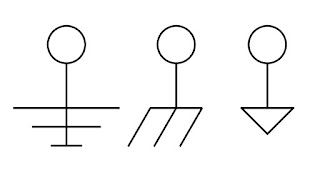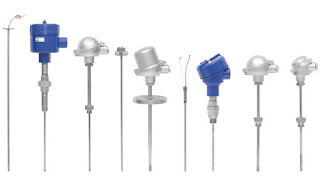 |
| Some Drawing Symbols Used For Ground |
Grounding of electrical equipment and electronic instrumentation is an aspect of project design and implementation that sometimes gets taken for granted. To say that proper electrical grounding is important is an understatement because, without it, certain safety aspects that we rely upon will simply not work. Additionally, and often more confounding, is the intermittent, unexpected, or bizarre behavior of electronic measurement and control devices when proper electrical grounding is not established.
I came across a series of white papers written by some knowledgeable people at
Acromag, a manufacturer of industrial input and output devices (industrial I/O). The comprehensive three part series covers best practices involved in the grounding of electrical equipment and electronic instrumentation, in language understandable to a reader of any technical level. The subject matter includes:
- Ground as protection
- How a ground fault circuit interrupter (GFCI) works
- Ground as a voltage stabilizer and transient limiter
- Tips on improving safety and signal integrity
- The importance of circuit grounding
- Description of the US AC power system and its use of earth ground
In my reading of the white papers, I gathered a few things I did not know, refreshed a few I had forgotten, and reinforced my understanding of the topic. There is something in the documents for everyone, and a small investment in time will yield some benefit. All stakeholders in industrial process measurement and control, from the factory floor to the executive office, should have the basic understanding contained in these papers.
Part One of the three part series is below.
Part Two and
Part Three will be published simultaneously in posts following this one. You can get any level of application assistance you need from the sales
engineers that specialize in industrial process equipment, measurement, and controls. Their product knowledge and technical resources, combined with your process mastery, will yield the best solution to any issue.






